Wood Preservation Canada
FPInnovations Research Library
FPInnovations
CWC Durability Research and Development

A:
For specific documentation or studies on evaluating wood degradation, you can contact Wood Preservation Canada or FPInnovations, which also has an online research library. In addition, the Canadian Wood Council (CWC) website provides information on long-term studies on wood durability. Here are some useful links:
Q:
Where can I find documentation or studies on testing the condition of wood components exposed to the elements?
Cracking Due to Dimensional Changes
Shrink-swell cycles:The seasonal variation in environmental moisture can cause wood to expand and contract, leading to surface and internal cracking.
Serious concerns:Surface cracks are usually only aesthetic concerns, but deep cracks or checks reaching the wood’s centre can compromise structural integrity by allowing moisture to penetrate deeply and become trapped.
Treated-wood concerns:For treated wood, deep cracks can expose the untreated interior, diminishing the protective benefits of the treatment.
Shrink-swell cycles:The seasonal variation in environmental moisture can cause wood to expand and contract, leading to surface and internal cracking.
Serious concerns:Surface cracks are usually only aesthetic concerns, but deep cracks or checks reaching the wood’s centre can compromise structural integrity by allowing moisture to penetrate deeply and become trapped.
Treated-wood concerns:For treated wood, deep cracks can expose the untreated interior, diminishing the protective benefits of the treatment.
By thoroughly inspecting the wood for these issues and utilizing available resources, you can effectively assess the structural capacity of wood components that have been exposed to the elements.
Insect Infestation
Types of infestation: Be aware of burrowing insects such as termites, ants, and beetles. While dry-wood species are common in the American South and Mexico, damp-wood species are prevalent in British Columbia and the Pacific Northwest.
Signs of infestation: Check for visible holes, tunnels in the wood, brittleness, and surface cracking under pressure. In addition, look for increased insect activity, such as ground tunnels or nests, around the structure.
Preservative treatments: Many moisture-preservative treatments also protect against insect attacks, reducing the risk of infestation.
Types of infestation: Be aware of burrowing insects such as termites, ants, and beetles. While dry-wood species are common in the American South and Mexico, damp-wood species are prevalent in British Columbia and the Pacific Northwest.
Signs of infestation: Check for visible holes, tunnels in the wood, brittleness, and surface cracking under pressure. In addition, look for increased insect activity, such as ground tunnels or nests, around the structure.
Preservative treatments: Many moisture-preservative treatments also protect against insect attacks, reducing the risk of infestation.
Rot and Fungal Growth
Signs of decay: Look for discoloration, visible fungal or mould growth, and, most important, softness or weakening of the wood. These are key indicators that moisture has penetrated the wood for extended periods, leading to biological decay.
Vulnerable areas: Pay special attention to the end grain of the wood. This area is particularly susceptible to absorbing moisture deeply and retaining it through multiple wet-dry cycles.
Treated wood: If the wood is treated, surface-mould growth is less likely to penetrate deeply. Surface mould can often be cleaned off, maintaining the wood’s integrity.
Signs of decay: Look for discoloration, visible fungal or mould growth, and, most important, softness or weakening of the wood. These are key indicators that moisture has penetrated the wood for extended periods, leading to biological decay.
Vulnerable areas: Pay special attention to the end grain of the wood. This area is particularly susceptible to absorbing moisture deeply and retaining it through multiple wet-dry cycles.
Treated wood: If the wood is treated, surface-mould growth is less likely to penetrate deeply. Surface mould can often be cleaned off, maintaining the wood’s integrity.
A:
Evaluating a wood structure that has been exposed to the elements for an extended period requires assessing several factors to determine if the wood has degraded, and if it can still perform its structural role effectively. Here are the primary considerations:
Q:
What should I consider when evaluating an existing wood structure that has been exposed to the elements for almost two years?
ASK AN EXPERT
Evaluating the Condition of Wood Exposed to the Elements


ASK AN EXPERT
As the incidence of forest fires rises during fire season, there’s renewed interest in the potential uses of standing timber left in fires’ aftermath. Understanding how this fire-killed wood can be utilized as lumber is crucial for ensuring these trees are not wasted and can be put to productive use.
Although specific research on the strength properties of fire-killed lumber is limited, manywood design standards1 indicatethat for wood exposed to fire in a building scenario, the residual section of a wood element retains its strength properties and can therefore withstand the applied loads. While standing trees are vulnerable to various forms of degradation after a forest fire event, timely harvesting can preserve the integrity of the wood, making it suitable for various end uses, including structural uses as lumber.
Sources from left to right:
Buchanan, A.H. (2002). “Structural Design for Fire Safety,” University of Canterbury, New Zealand: John Wiley & Sons Ltd.
EN 1995 (2004). “Eurocode 5: Design of timber structures.” Standard, European Committee for Standardization, British Standards Institution, BSI, Brussels.
Buchanan, A.H. (2002). “Structural Design for Fire Safety,” University of Canterbury, New Zealand: John Wiley & Sons Ltd.
EN 1995 (2004). “Eurocode 5: Design of timber structures.” Standard, European Committee for Standardization, British Standards Institution, BSI, Brussels.
1SeeEN 1995 (2004) Eurocode 5: Design of timber structuresor CSA O86:24 – Engineering design in wood orFire Design Specification (FDS) 2024
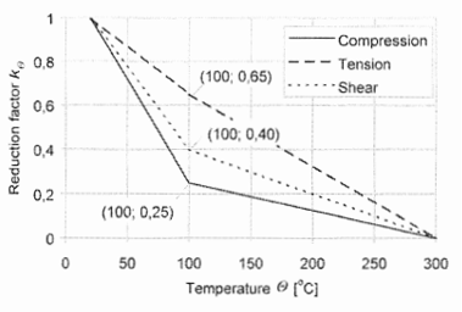
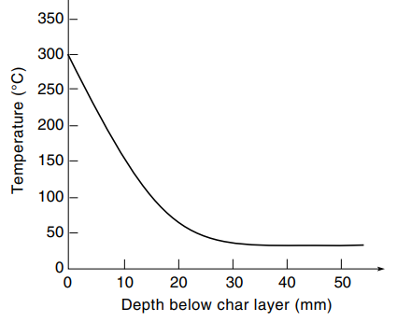
The Science Behind Heat-affected Wood
Heat impacts wood strength in two ways: temporarily, while the wood is exposed to high temperatures; and permanently, due to thermal degradation, which depends on the duration of exposure to fire. Wood exhibits a strong thermal gradient beyond the char layer. For example, at approximately 35 mm beyond the char layer after a fire, the wood temperature remains at 21° C. The Eurocode’s reduction factor, KΘ, accounts for the portion of wood affected by heat, which is typically within 35 mm beyond the char layer. Beyond this zone, wood fibres retain their full initial strength, as they are unaffected by heat.
Heat impacts wood strength in two ways: temporarily, while the wood is exposed to high temperatures; and permanently, due to thermal degradation, which depends on the duration of exposure to fire. Wood exhibits a strong thermal gradient beyond the char layer. For example, at approximately 35 mm beyond the char layer after a fire, the wood temperature remains at 21° C. The Eurocode’s reduction factor, KΘ, accounts for the portion of wood affected by heat, which is typically within 35 mm beyond the char layer. Beyond this zone, wood fibres retain their full initial strength, as they are unaffected by heat.
Protection by Bark and Timely Harvesting
In a wildfire, the tree bark and the charred outer layer protect the interior of the tree from heat. If harvested promptly after a wildfire, limiting the effects of decay and insect damage, the inner wood—which has not undergone pyrolysis—retains its original strength properties.
In a wildfire, the tree bark and the charred outer layer protect the interior of the tree from heat. If harvested promptly after a wildfire, limiting the effects of decay and insect damage, the inner wood—which has not undergone pyrolysis—retains its original strength properties.
Decay and Insect Damage
Decay and insect infestation are the main causes of strength-reducing degradation in fire-killed trees. These effects become evident during the harvesting and transformation processes, so compromised trees can be easily removed after a visual inspection.
Decay and insect infestation are the main causes of strength-reducing degradation in fire-killed trees. These effects become evident during the harvesting and transformation processes, so compromised trees can be easily removed after a visual inspection.
Charring and Heat Effects
Charring primarily occurs on wood already exposed by injuries before a wildfire, affecting only a small fraction of the trees. The more significant threats to the structural integrity of fire-killed trees are decay, insects, and weathering, which progressively deteriorate the wood if it remains unharvested for an extended period. The degree of deterioration depends on several factors, including tree species, size, burn severity, and site characteristics.
Charring primarily occurs on wood already exposed by injuries before a wildfire, affecting only a small fraction of the trees. The more significant threats to the structural integrity of fire-killed trees are decay, insects, and weathering, which progressively deteriorate the wood if it remains unharvested for an extended period. The degree of deterioration depends on several factors, including tree species, size, burn severity, and site characteristics.
Wood and Timber Condition Assessment Manual
Repair of Fire-Damaged Mass Timber
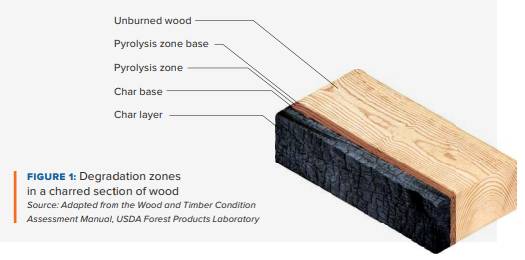
As the incidence of forest fires rises during fire season, there’s renewed interest in the potential uses of standing timber left in fires’ aftermath. Understanding how this fire-killed wood can be utilized as lumber is crucial for ensuring these trees are not wasted and can be put to productive use.
Currently, there is no evidence that lumber made from fire-killed trees displays reduced design properties. And though research into the strength properties of this wood is limited, there has been extensive testing on the strength properties of building components after a structural fire.
In a building fire scenario, the residual section of a mass timber element—such as a panel, column, or beam—retains its strength properties and can continue to bear applied loads when designed accordingly. This residual section consists of the unburned wood beneath the char layer and the pyrolysis zone. Due to wood’s low thermal conductivity, the high temperatures don’t affect the structural integrity of the solid wood at a certain distance underneath the charred portion. The same principles hold true for standing trees in a forest after a wildfire.
Currently, there is no evidence that lumber made from fire-killed trees displays reduced design properties. And though research into the strength properties of this wood is limited, there has been extensive testing on the strength properties of building components after a structural fire.
In a building fire scenario, the residual section of a mass timber element—such as a panel, column, or beam—retains its strength properties and can continue to bear applied loads when designed accordingly. This residual section consists of the unburned wood beneath the char layer and the pyrolysis zone. Due to wood’s low thermal conductivity, the high temperatures don’t affect the structural integrity of the solid wood at a certain distance underneath the charred portion. The same principles hold true for standing trees in a forest after a wildfire.
A:
Are there any changes to the structural properties of lumber from those fire-killed trees?
How does a forest fire impact the potential end use of lumber harvested from trees killed by fire?
Q:
Wood Preservation Canada
FPInnovations Research Library
FPInnovations
CWC Durability Research and Development
A:
For specific documentation or studies on evaluating wood degradation, you can contact Wood Preservation Canada or FPInnovations, which also has an online research library. In addition, the Canadian Wood Council (CWC) website provides information on long-term studies on wood durability. Here are some useful links:
Q:
Where can I find documentation or studies on testing the condition of wood components exposed to the elements?
Cracking Due to Dimensional Changes
Shrink-swell cycles:The seasonal variation in environmental moisture can cause wood to expand and contract, leading to surface and internal cracking.
Serious concerns:Surface cracks are usually only aesthetic concerns, but deep cracks or checks reaching the wood’s centre can compromise structural integrity by allowing moisture to penetrate deeply and become trapped.
Treated-wood concerns:For treated wood, deep cracks can expose the untreated interior, diminishing the protective benefits of the treatment.
Shrink-swell cycles:The seasonal variation in environmental moisture can cause wood to expand and contract, leading to surface and internal cracking.
Serious concerns:Surface cracks are usually only aesthetic concerns, but deep cracks or checks reaching the wood’s centre can compromise structural integrity by allowing moisture to penetrate deeply and become trapped.
Treated-wood concerns:For treated wood, deep cracks can expose the untreated interior, diminishing the protective benefits of the treatment.
By thoroughly inspecting the wood for these issues and utilizing available resources, you can effectively assess the structural capacity of wood components that have been exposed to the elements.
Insect Infestation
Types of infestation: Be aware of burrowing insects such as termites, ants, and beetles. While dry-wood species are common in the American South and Mexico, damp-wood species are prevalent in British Columbia and the Pacific Northwest.
Signs of infestation: Check for visible holes, tunnels in the wood, brittleness, and surface cracking under pressure. In addition, look for increased insect activity, such as ground tunnels or nests, around the structure.
Preservative treatments: Many moisture-preservative treatments also protect against insect attacks, reducing the risk of infestation.
Types of infestation: Be aware of burrowing insects such as termites, ants, and beetles. While dry-wood species are common in the American South and Mexico, damp-wood species are prevalent in British Columbia and the Pacific Northwest.
Signs of infestation: Check for visible holes, tunnels in the wood, brittleness, and surface cracking under pressure. In addition, look for increased insect activity, such as ground tunnels or nests, around the structure.
Preservative treatments: Many moisture-preservative treatments also protect against insect attacks, reducing the risk of infestation.
A:
Evaluating a wood structure that has been exposed to the elements for an extended period requires assessing several factors to determine if the wood has degraded, and if it can still perform its structural role effectively. Here are the primary considerations:
ASK AN EXPERT
Q:
What should I consider when evaluating an existing wood structure that has been exposed to the elements for almost two years?
Rot and Fungal Growth
Signs of decay: Look for discoloration, visible fungal or mould growth, and, most important, softness or weakening of the wood. These are key indicators that moisture has penetrated the wood for extended periods, leading to biological decay.
Vulnerable areas: Pay special attention to the end grain of the wood. This area is particularly susceptible to absorbing moisture deeply and retaining it through multiple wet-dry cycles.
Treated wood: If the wood is treated, surface-mould growth is less likely to penetrate deeply. Surface mould can often be cleaned off, maintaining the wood’s integrity.
Signs of decay: Look for discoloration, visible fungal or mould growth, and, most important, softness or weakening of the wood. These are key indicators that moisture has penetrated the wood for extended periods, leading to biological decay.
Vulnerable areas: Pay special attention to the end grain of the wood. This area is particularly susceptible to absorbing moisture deeply and retaining it through multiple wet-dry cycles.
Treated wood: If the wood is treated, surface-mould growth is less likely to penetrate deeply. Surface mould can often be cleaned off, maintaining the wood’s integrity.

Evaluating the Condition of Wood Exposed to the Elements
As the incidence of forest fires rises during fire season, there’s renewed interest in the potential uses of standing timber left in fires’ aftermath. Understanding how this fire-killed wood can be utilized as lumber is crucial for ensuring these trees are not wasted and can be put to productive use.
Although specific research on the strength properties of fire-killed lumber is limited, manywood design standards1 indicatethat for wood exposed to fire in a building scenario, the residual section of a wood element retains its strength properties and can therefore withstand the applied loads. While standing trees are vulnerable to various forms of degradation after a forest fire event, timely harvesting can preserve the integrity of the wood, making it suitable for various end uses, including structural uses as lumber.
Sources from left to right:
Buchanan, A.H. (2002). “Structural Design for Fire Safety,” University of Canterbury, New Zealand: John Wiley & Sons Ltd.
EN 1995 (2004). “Eurocode 5: Design of timber structures.” Standard, European Committee for Standardization, British Standards Institution, BSI, Brussels.
Buchanan, A.H. (2002). “Structural Design for Fire Safety,” University of Canterbury, New Zealand: John Wiley & Sons Ltd.
EN 1995 (2004). “Eurocode 5: Design of timber structures.” Standard, European Committee for Standardization, British Standards Institution, BSI, Brussels.
1SeeEN 1995 (2004) Eurocode 5: Design of timber structuresor CSA O86:24 – Engineering design in wood orFire Design Specification (FDS) 2024
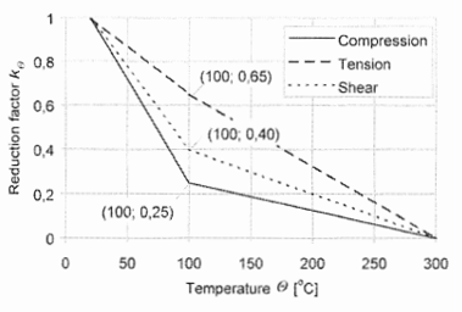
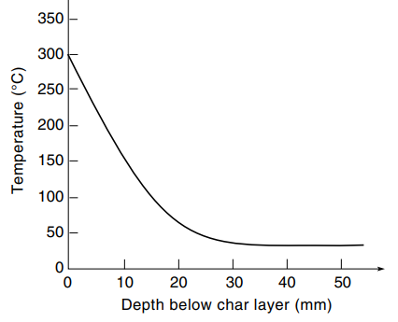
The Science Behind Heat-affected Wood
Heat impacts wood strength in two ways: temporarily, while the wood is exposed to high temperatures; and permanently, due to thermal degradation, which depends on the duration of exposure to fire. Wood exhibits a strong thermal gradient beyond the char layer. For example, at approximately 35 mm beyond the char layer after a fire, the wood temperature remains at 21° C. The Eurocode’s reduction factor, KΘ, accounts for the portion of wood affected by heat, which is typically within 35 mm beyond the char layer. Beyond this zone, wood fibres retain their full initial strength, as they are unaffected by heat.
Heat impacts wood strength in two ways: temporarily, while the wood is exposed to high temperatures; and permanently, due to thermal degradation, which depends on the duration of exposure to fire. Wood exhibits a strong thermal gradient beyond the char layer. For example, at approximately 35 mm beyond the char layer after a fire, the wood temperature remains at 21° C. The Eurocode’s reduction factor, KΘ, accounts for the portion of wood affected by heat, which is typically within 35 mm beyond the char layer. Beyond this zone, wood fibres retain their full initial strength, as they are unaffected by heat.
Protection by Bark and Timely Harvesting
In a wildfire, the tree bark and the charred outer layer protect the interior of the tree from heat. If harvested promptly after a wildfire, limiting the effects of decay and insect damage, the inner wood—which has not undergone pyrolysis—retains its original strength properties.
In a wildfire, the tree bark and the charred outer layer protect the interior of the tree from heat. If harvested promptly after a wildfire, limiting the effects of decay and insect damage, the inner wood—which has not undergone pyrolysis—retains its original strength properties.
Decay and Insect Damage
Decay and insect infestation are the main causes of strength-reducing degradation in fire-killed trees. These effects become evident during the harvesting and transformation processes, so compromised trees can be easily removed after a visual inspection.
Decay and insect infestation are the main causes of strength-reducing degradation in fire-killed trees. These effects become evident during the harvesting and transformation processes, so compromised trees can be easily removed after a visual inspection.
Charring and Heat Effects
Charring primarily occurs on wood already exposed by injuries before a wildfire, affecting only a small fraction of the trees. The more significant threats to the structural integrity of fire-killed trees are decay, insects, and weathering, which progressively deteriorate the wood if it remains unharvested for an extended period. The degree of deterioration depends on several factors, including tree species, size, burn severity, and site characteristics.
Wood and Timber Condition Assessment Manual
Repair of Fire-Damaged Mass Timber
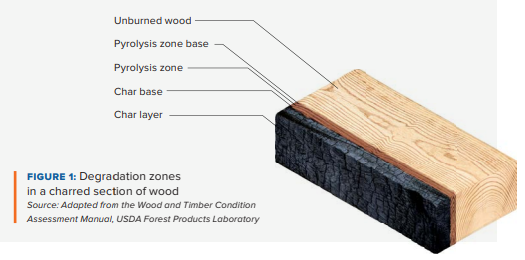
As the incidence of forest fires rises during fire season, there’s renewed interest in the potential uses of standing timber left in fires’ aftermath. Understanding how this fire-killed wood can be utilized as lumber is crucial for ensuring these trees are not wasted and can be put to productive use.
Currently, there is no evidence that lumber made from fire-killed trees displays reduced design properties. And though research into the strength properties of this wood is limited, there has been extensive testing on the strength properties of building components after a structural fire.
In a building fire scenario, the residual section of a mass timber element—such as a panel, column, or beam—retains its strength properties and can continue to bear applied loads when designed accordingly. This residual section consists of the unburned wood beneath the char layer and the pyrolysis zone. Due to wood’s low thermal conductivity, the high temperatures don’t affect the structural integrity of the solid wood at a certain distance underneath the charred portion. The same principles hold true for standing trees in a forest after a wildfire.
Currently, there is no evidence that lumber made from fire-killed trees displays reduced design properties. And though research into the strength properties of this wood is limited, there has been extensive testing on the strength properties of building components after a structural fire.
In a building fire scenario, the residual section of a mass timber element—such as a panel, column, or beam—retains its strength properties and can continue to bear applied loads when designed accordingly. This residual section consists of the unburned wood beneath the char layer and the pyrolysis zone. Due to wood’s low thermal conductivity, the high temperatures don’t affect the structural integrity of the solid wood at a certain distance underneath the charred portion. The same principles hold true for standing trees in a forest after a wildfire.
A:
Are there any changes to the structural properties of lumber from those fire-killed trees?
How does a forest fire impact the potential end use of lumber harvested from trees killed by fire?
Q:
ASK AN EXPERT
